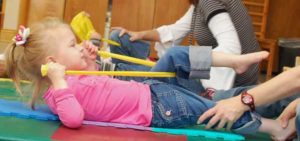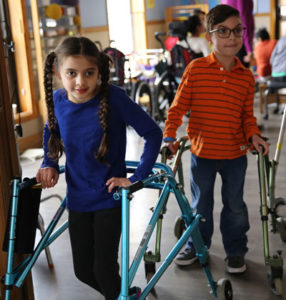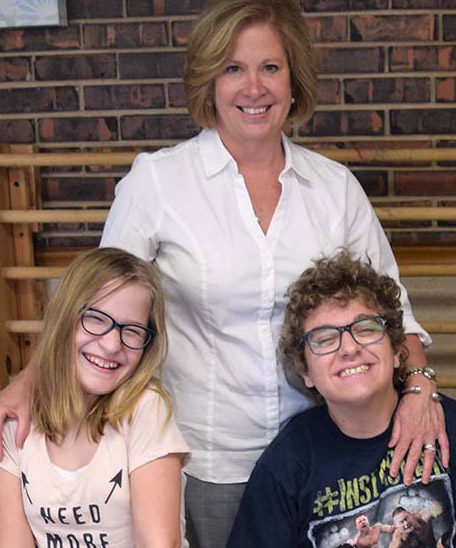Archive for October 2018
10 Principles of Neuroplasticity: Part 2
 Let’s dive right into the first five principles of neuroplasticity. Everything I write about here is found in the article, “Principles of Experience-Dependent Neural Plasticity: Implications for Rehabilitation After Brain Damage.”1
Let’s dive right into the first five principles of neuroplasticity. Everything I write about here is found in the article, “Principles of Experience-Dependent Neural Plasticity: Implications for Rehabilitation After Brain Damage.”1
1. Use it or lose it
Failure to drive specific brain functions can lead to loss of abilities.
This principle is pretty intuitive: if you don’t actively use a functional component of the brain, that part starts to lose the ability to carry out the function it is responsible for. This is true for everyone: say you take piano lessons when you are young, but you stop taking them and don’t touch a piano for 10 years. When you try to play the piano again, you may be able to remember a little bit at best; certainly, you won’t be able to play as well as you did when you were practicing regularly. You literally lost some of the brain cells, and the connections between cells, responsible for playing the piano. You didn’t use it, so you lost it.
This is even true in the context of injured brain tissue. Researchers have found that when one part of the brain is injured, other parts of the brain can take over the function of the injured part. With rehabilitation, the brain literally reorganizes itself to carry out functional tasks.
What this means for kids with CP, is that it’s important to continue actively completing motor tasks, otherwise their brain will adapt and lose the “muscle memory” of how to complete those tasks. Of course, that’s true not just from a neurologic perspective but from a muscle perspective – keeping your brain strong and your muscles strong go hand in hand here!
2. Use it and improve it
Training that drives a specific brain function can lead to improving abilities.
This principle is also easy to understand: the brain will change in response to specific training. When a certain task is learned, the part of the brain responsible for that task grows new brain cells and forms stronger connections between those brain cells. This goes along with a change in output: the person becomes better at doing that task that is trained. Taken together with the first principle of neuroplasticity, there is a strong case for kids with CP to stay active!
3. Specificity
The nature of the training experience dictates the nature of the change in the brain (plasticity).
In this third principle, we get a little more, well, specific about neuroplasticity. The authors explain how different kinds of training can affect what changes happen in the brain. They highlight two examples.
First, the authors note how the biggest changes that happen to the brain are the result of learning new skills. In animal studies, research has shown that learning new skills yields a bigger change in the brain as compared to repetition of previously acquired motor movements. Please note that this doesn’t mean that working on existing skills is not important – remember the first principle, and look ahead at the fourth too – but rather that incorporating new skills into rehab can help maximize neuroplasticity.
Second, the authors explain that there is regional specificity. This means that if you are training a skill that uses a specific body part, for example using only your right hand, the changes that happen to the brain will be largest in the areas of the brain responsible for that movement. Since your right and left sides of your body are controlled by the opposite side of your brain, that means working on something with your right hand is going to make the biggest changes to the left side of the brain, and vice versa.
4. Repetition matters
Change (plasticity) requires sufficient repetition.
Think back to any time you learned a new skill. It could be writing the alphabet, playing the piano, learning to drive, anything. Did you perfect that skill after practicing it just a few times? Probably not. You had to practice it many times before it felt natural and easy to you. That’s because lasting, meaningful neuroplastic changes only happen with repetition.
The same process is at play when learning motor skills. It is not enough to practice going from sit to stand just a few times and expect to have mastered the skill. In order for a child’s brain to undergo meaningful change, it is critical for the skill to be repeated many times.
5. Intensity matters
Change (plasticity) requires intensive training.
Here’s an interesting fact about neuroplasticity that you can impress your friends with. There was an animal study where researchers studied brain changes following practice of a skilled motor task. They divided the animals into two groups: one group completed the task 400 times per day, and the other group, 60 times per day. They found that the animals in the first group had a measurable increase in connections between brain cells in the part of the brain responsible for that task, whereas animals that completed the task only 60 times per day did not.
The takeaway here is that kids with CP need pretty high intensity in their motor program in order to make meaningful changes in their brain.
Phew. We made it through the first five principles of neuroplasticity!
Before we move on the next five, I’d like to pause and consider how the ideas seen so far connect with what conductive education offers. Kids who come to the Center practice a wide range of motor tasks regularly, in a highly intense fashion, with lots of repetition of many familiar tasks, while also being given opportunities to learn new skills on an individualized basis. From what you’ve just read, I hope it’s apparent that conductive education capitalizes on every single one of the first five principles.
Stay tuned for the last installment of the neuroplasticity series!
1. Kleim, JA, Jones, TA. (2008). Principles of experience-dependent neural plasticity: Implications for rehabilitation after brain damage. Journal of Speech, Language, and Hearing Research, 51, S225-S239.
10 Principles of Neuroplasticity: Part 1
 Neuroplasticity – What is it and why does it matter?
Neuroplasticity – What is it and why does it matter?
Neuroplasticity (or neural plasticity) is a buzzword that is often used to advertise particular therapies or techniques, so-called “gurus” of neuroplasticity, or products. In order to make educated decisions about what kind of therapy will be most beneficial for your child, and to use your family income wisely, best to really know what this word means and why you need to care about it.
In this three-part series, I’m first going to define what neuroplasticity is, and introduce ten principles of neuroplasticity. In the next two parts, I’ll go into greater detail with each principle to help you understand what activities and experiences will make the biggest difference as it relates to neuroplasticity. The information I’ll present to you is based largely on research summarized in this article, titled “Principles of Experience-Dependent Neural Plasticity: Implications for Rehabilitation After Brain Damage.”1 If you want to do a deep dive into this concept, reading the full article is a great place to start.
So first, allow me to define Neuroplasticity. The term is a mash-up of two words.
Neural: relating to the nervous system
Plasticity: the capacity to adapt or change
In other words, it refers to the brain’s ability to change itself. As the authors of the article put it, “neural plasticity is the mechanism by which the brain encodes experience and learns new behaviors. It is also the mechanism by which the damaged brain learns lost behavior in response to rehabilitation.” Neuroplasticity is the process in which the brain forms new neurons and lays down new connections between neurons, in response to learning, in order to form a pathway to repeat the learned behavior.
This video does a great job of explaining how neuroplasticity works, too.
Neuroplasticity is a relatively new concept. As recently as a few decades ago, it was believed that our brains were “hardwired” and what we could and couldn’t do was essentially fixed, especially after a certain age, and certainly after an injury to the brain. Good news – researchers have found that this is not true!
However: neural plasticity does not happen In a vacuum. It is experience dependent, and some experiences are going to make a bigger difference than others.
Here’s where it gets interesting! Allow me to introduce you to the ten principles of neuroplasticity, the factors identified as especially important in facilitating neuroplasticity in the context of brain injury.
- Use it or lose it
Failure to drive specific brain functions can lead to loss of abilities. - Use it and improve it
Training that drives a specific brain function can lead to improving abilities. - Specificity
The nature of the training experience dictates the nature of the change in the brain (plasticity). - Repetition matters
Change (plasticity) requires sufficient repetition. - Intensity matters
Change (plasticity) requires intensive training. - Time matters
Different forms of change (plasticity) in the brain happen at different times during training. - Salience matters
The training experience must be meaningful to the person in order to cause change (plasticity). - Age matters
Training-induced change (plasticity) occurs more readily in younger brains. - Transference
Change in function as a result of one training experience can even lead to learning other similar skills. - Interference
Brain changes (plasticity) that result in bad habits can interfere with learning good habits.
Stay tuned for Part 2!
1. Kleim, JA, Jones, TA. (2008). Principles of experience-dependent neural plasticity: Implications for rehabilitation after brain damage. Journal of Speech, Language, and Hearing Research, 51, S225-S239.
Loyola Magazine Article
 Recently the Center’s founder, Patti Herbst, was interviewed and featured in Loyola Magazine’s Alumni Voices. In the article, titled Giving kids what they need most, Patti shares her personal experience about when her son was born with cerebral palsy, and how she and her husband, Chuck, learned how to help him achieve independence. Her story tells how this discovery led her to help hundreds of other children with physical disabilities.
Recently the Center’s founder, Patti Herbst, was interviewed and featured in Loyola Magazine’s Alumni Voices. In the article, titled Giving kids what they need most, Patti shares her personal experience about when her son was born with cerebral palsy, and how she and her husband, Chuck, learned how to help him achieve independence. Her story tells how this discovery led her to help hundreds of other children with physical disabilities.
Here is an excerpt:
‘I’ve learned so much over the years through my work, and as a parent, about children with physical disabilities. Sometimes people have the misconception that these children aren’t happy, and as parents, all we want to do is make sure our children live full, happy lives. But children with cerebral palsy and other developmental disabilities are still first and foremost children—they are full of awe, wonder, joy, and laughter. And people with disabilities are just as happy as anyone else.’
